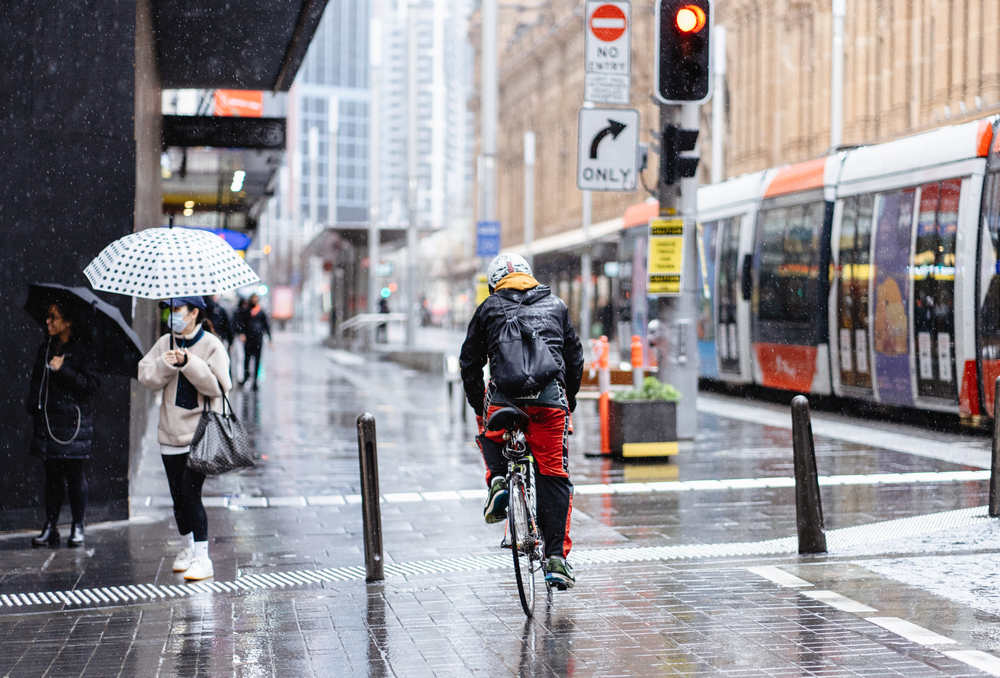Most of us are fair-weather cyclists, especially here in southern California where it’s sunny most of the year. However, rainy season still hits us, and cycling under those conditions does require extra safety precautions. When bad weather strikes, you can ensure a safer ride by doing a couple of different things. Check out these 5 safety tips for cycling in the rain:
1. Don’t Lean into Corners
Living in Southern California, most of us are used to cycling in dry conditions. On dry roads, leaning into corners helps maintain speed and momentum. However, in wet conditions, leaning into corners can decrease the contact patch of your tire, thus increasing the chances of your bike sliding out from under you. That is why it's recommended that you slow down in general while riding in the rain. This will help you maintain your contact patch with the slippery road. Also, keep your head up and look further down the road to improve your sense of balance and avoid puddles.2. Lower your Tire Pressure
In wet conditions, thin tires with high tire pressure make it difficult to maintain tire tractions on the road. Consider reducing the tire pressure of your tire a bit in order to widen your tire’s contact patch to the ground. This will increase the surface area of your tires and improve the tire’s grip on the road. You may also think about switching to “all-season” tires, or wider tired during the wintertime.3. Decrease Your Speed
As mentioned earlier, decreasing your overall speed during these conditions is a must! Poor road conditions and visibility mean you won’t have as much time to react to hazards. Adjust your speed to account for the fact that it takes twice as long to come to a complete stop in the rain compared to dry conditions – especially on rim brakes. Remember that not all roads are the same. Cobblestones, metal, and paint are significant slip hazards as these surfaces become like ice when wet. More insidious road hazards include almost invisible patches of oil. Stay away from puddles as they could conceal potholes and other road defects. For the hazards you can and cannot see, it’s best that you slow down and be hyper-aware of your surroundings at all times.
4. Adjust Your Braking Habits
While riding in wet conditions, adjust your braking habits to stay safe. Keep the following braking tips in mind when riding on wet roads:- Slow down gradually - Do not wait until the last second to stop when approaching a red light or stop sign. Instead, gradually begin to slow down at twice the distance you normally would under dry conditions.
- Drag your brakes lightly - Water buildup on the rim’s surface can decrease your stopping power. By pulling both brake levers lightly (in a way that the brake pads are just barely touching the rim), you’ll clear excess water from the braking surface. This will let you squeeze just a bit harder before you come to a complete stop.
- Switch your wheels and brake pads - Cycling in wet conditions causes brake pads to wear faster. Because of this, keep your carbon wheels at home and make sure you have plenty of brake pad material left before going out. Consider a brake pad designed for rainy weather — or, even better, disc brakes.
5. Gear Up for the Rain
Even in Southern California, sudden downfalls can come out of nowhere. There’s nothing amusing about arriving at your destination shivering in a soggy mess. As the saying goes, “there’s no bad weather, just bad gear.” That’s why it’s important to have the right gear for riding under the rain, such as:- Rain jackets - A rain jacket is the most basic rain protection out there. It keeps you mostly dry and can even be worn over a backpack.
- Rain clothing - if you don’t have serious rain gear, you can wear fast-drying clothes for light rain.
- Bike fenders - They’ll help keep water from splashing up on you.
- Bike seat cover - Whether you have rain pants or not, bike seat covers are always good to have!